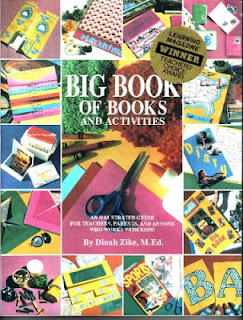Over the past month I met with quite a number of families new to homeschooling. It is so great to see the excitement and passion with which these parents embark on this amazing journey with their children. It is thrilling to see how all kinds of families choose to homeschool from all walks of life, but one thing these families have in common is their confusion when choosing the RIGHT curriculum on a journey that is so unfamiliar and uncertain.
What should one take into consideration when choosing a curriculum?
1. Curriculum must serve you, you are not to serve the curriculum
I often see families who are burned out within 18 months after starting homeschooling, because they experience bondage to the curriculum they chose. From as early as a mere 5 years old, families want to put their little ones onto a formal curriculum, mostly due to the pressure of families and friends’ whose children went to school at that age. Within a very short period little ones of 5 or 6 years old, as well as young teens, will experience resistance to education when it is expected of them to work for hours on prescribed subjects, they often don’t even have an interest in. The children will need to perform like puppets and the mothers become discouraged to motivate their children, while trying to comply to the standards and tests of the curriculum they have chosen.
2. Let your children’s personality and learning style guide their curriculum
Each child has a natural appetite for all knowledge, reflect a part of God’s creative nature and has a God-given curiosity, within their unique learning style.
Homeschooling is such an opportunity to use this hunger for knowledge, creativity and curiosity and let children discover their talents and gifting in the safe environment of their home and under the loving, caring eye of their parents.
Choose a curriculum in which you can develop their minds to the full, by taking into account your child’s learning style. When a child is allowed to discover in the way he is a natural learner, learning will be fun and enjoyable for the child.
When we just start homeschooling twelve years ago, we had the privilege to meet Martie Du Plessis from Dynamis who specialised to help home educating families discover their learning styles. We learned any child has the preference to learn kinaesthetically, visually or audibly. Most of my children are kinaesthetic and visual learners. As a result reading aloud is quite a challenge. They will not sit still and all of them want to see the pictures.
If I wasn’t aware of their lack of preference in audible learning, I would have taken all the fun out of reading, by being extremely strict.
On top of that you get children who are thorough, structured, systematic, analytical and objective. These children want as much knowledge as possible and thrive on organization and time to complete their work. Unreasonable deadlines and being rushed will stress them out. This child might look like the perfect homeschooling student in the digital era. They always have their knowledge ready, they analyze data before making a decision and are able to conceptualize ideas. This child of mine made it quite easy on me to look like a ‘successful’ homeschooling mother, who did everything ‘right’.
Then you get other children who lean more by being adventurous, curious, innovative and creative. They are quick, intuitive and instinctive. They thrive on inspiration, independence and freedom to choose options. Excessive restrictions and forced routine just kill their creativity and learning experience. This child is quite a challenge to homeschool. They might give the impression of being stubborn, uncompromising, impulsive, not a team worker and asking too many ‘why questions’. Your typical child whom they put on mind altering drugs at the age of seven. But if you can appreciate their sense of humour, multidimensional personality and creativity within their independence, you might just be able to raise quite a remarkable young adult who has the ability to change the world.
You might have a hardworking, organized, accurate and consistent child. They are dependable, conventional and factual by nature. They thrive on predictability and schedules. You will stress them out by too much to do when they do not have a clean and quiet place to learn, or an example to work form. I have one of these children. Due to these children’s natural organizing skill, productivity, ability to complete their tasks with ease while focusing on detail, I cannot cope without them in my home.
You might also have a sensitive, compassionate, sentimental and imaginative child. They are perceptive and spontaneous, the nurturing type. They thrive on praise, working together and having the opportunity to be creative. I cannot imagine how my home would have been if I didn’t have this child in my home. They spontaneously understand other’s feelings and are constantly concerned about others. Quite an asset in a busy home of ten.
Just imagine if I had not been aware of these differences in my children and I tried to teach them all in the same way? Homeschooling would become drudgery, a burden.
How will the above knowledge, applied to your children, influence the curriculum you choose?
3. Choose a curriculum which spark them to discover as a natural, enjoyable part of family life.
Homeschooling is real life, don’t you agree?
I often hear mothers’ concerns that life gets in the way of their homeschooling, and they are stressed out due to lengthy periods of time they are not able to do as much learning as what was ‘scheduled’. That is exactly how it should be - LIFE IS SCHOOL.
Clay and Sally Clarkson compiled it beautifully in “Educating the WholeHearted Child”
A curriculum making use of real life will always raise a child who does well on the test of real life.
The curriculum you use should allow you to use real life to spark your children to discover and learn. I’m constantly attentive to what my children are interested in and to use that interest to make them learn. Currently my home is filled with silkworms on all kinds of shapes and sizes, and we are learning, without my little ones even knowing it.
A few months ago it was birds and bird nests.
We just returned from a short visit to George and Knysna, during which they applied so many of their knowledge gained over the past few months - lets call it revision.
Years ago when I started homeschooling CJ our oldest child, I read Clay and Sally Clarkson’s “Educating the Wholehearted Child”. I loved their Home-Centered Learning Model. In this model they focused on five study areas as the child develop in their learning ability.
Discipleship Studies - The solid foundation for learning, with the purpose of shaping their hearts. You can never try to fill a child’s mind with information and knowledge, if you don’t shape his/her heart first.
Disciplined Studies - The study of the ‘basics’ or 3R’s (reading, writing, arithmetic) and thinking, with the purpose of developing your children’s foundational learning skills.
Discussion Studies - The study of the humanities - history, geography and fine arts, with the purpose to feed your children’s minds by giving them the best in living books.
Discovery Studies - The study of learning - nature, science, creative arts, all interests with the purpose to simulate in your children a love for learning by creating opportunities for curiosity, creativity and discovery.
Discretionary Studies - the finishing in the study of living, home and community life and life skills, with the propose to direct your children in developing a range of skills and abilities for adult life according to their gifts and your family’s circumstances and resources.
These 5 study areas come very natural in normal family life.
The curriculum you choose should never isolate your child from real life.
4. No easy curriculum
No matter what kind of curriculum you choose, it will ask lots and lots of sacrificing from the parents. There is no easy curriculum with little involvement, minimal financial costs or no preparation which will equip your child for life.
I love how Clay and Sally Clarkson phrase counting the cost of homeschooling in their book Educating the WholeHearted Child:
The cost of ministry - Willing to minister to your children… to become a servant like Jesus, giving up your own life for your children?
The cost of lifestyle - Willing to accept, along with the joys and blessing, the limitations and sacrifices of the homeschooling lifestyle?
The cost of commitment - willing to take a step of faith, trusting God to provide and intending in your heart to persevere in that decision?
Are you willing to pay the cost?
5. Let the curriculum shape your children to become everything God wants them to become and able to walk in the calling of their life.
The current trend in education aims to produce adults whom will have a ‘decent job’ and earn money to make a living. How about educating your child to discover the calling on their life and walk in it, whether it is to fill a job of create a job? Whenever a person discover the calling on his/her life, they will be satisfied, fulfilled, content and at peace. That is how God intend it. Many people I know at the age of 40 are discontent and searching for purpose, mostly because the first part of their life was all about labouring for a perfect job, a perfect life, which at the end didn’t satisfy or brought along the peace they were longing for.
Homeschooling is the one place where we as parents should aim to expose our children to as many opportunities as possible, so they can:
Discover their gifting and talents, which will direct them to their purpose in life and give them the satisfaction of seeing God work through them, changing the World.
 This post features on the South African Carnival of Homeschool Bloggers (SACH Bloggers) where South African homeschoolers share experiences, ideas, philosophies and much more. You can join the carnival too by heading to the South African Carnival of Homeschool Bloggers sign up page. We hope you enjoy the carnival as much as we have! Read more from this October 2012 Carnival here.
This post features on the South African Carnival of Homeschool Bloggers (SACH Bloggers) where South African homeschoolers share experiences, ideas, philosophies and much more. You can join the carnival too by heading to the South African Carnival of Homeschool Bloggers sign up page. We hope you enjoy the carnival as much as we have! Read more from this October 2012 Carnival here.This posting is also linked up to:
With much love
Linnie







































































